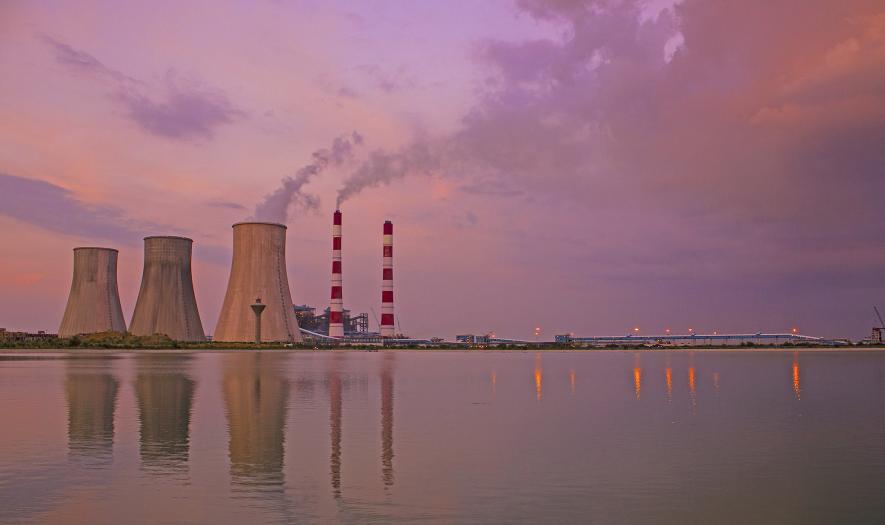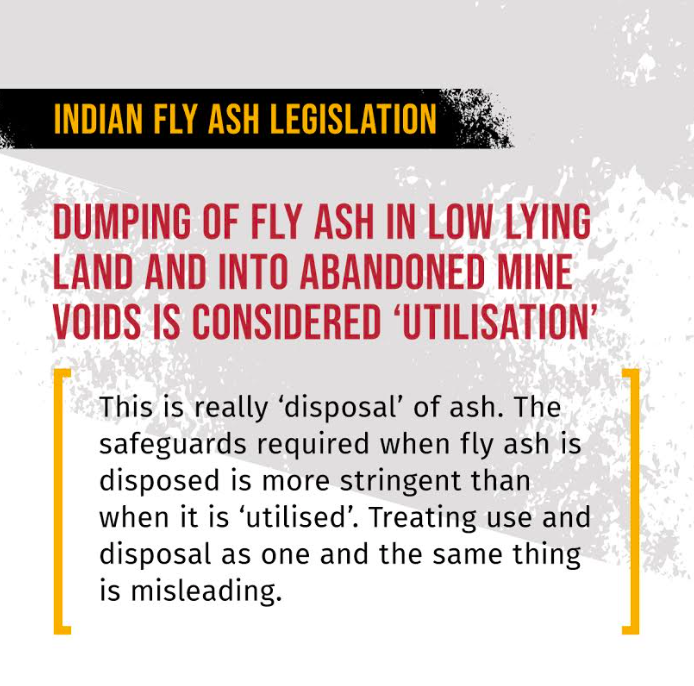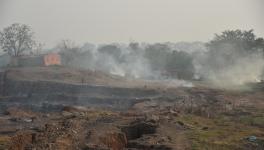Fly Ash Breaches Continue across India, Draft Regulations Aim to Justify Dumping, Say Experts

Image Courtesy: The Wire Science
As India privatises coal and increases its dependence on the domestic product the generation of toxic fly ash and its management have taken a backseat for industrial profit. This happens even as fly ash accidents continue wrecking havoc to the environment and livelihoods of local communities.
As annual fly ash generated from Indian coal power plants witnessed an increase from 123 million tonnes in 2009–10 to 217 million tonnes in 2018–19 – an increase of almost 76% – fly ash breaches continue.
The latest study, titled ‘'Lest We Forget: A status report of neglect of coal ash accidents in India' documents recurring fly ash breaches in the country and questions the effectiveness of monetary compensation as deterrents, since such environmental accidents continue to occur unabated. The report, produced by ASAR Social Impact Advisors, Centre for Research on Energy and Clean Air (CREA), and Manthan Adhyayan Kendra, is a status update on fly ash breaches at coal based power plants in India between May 2019 and May 2021.
The report shows that eight fly ash related accidents that have occurred over the last two years at Essar Thermal Power Station (Madhya Pradesh), Vindhyachal Thermal Power Plant (Madhya Pradesh), Reliance Sasan Ultra Mega Power, Talcher Thermal Power Station (Odisha), Bokaro ThermalPower Station (Jharkhand), North Chennai Thermal Power Station among others. In the latest breach on June at the NTPC Korba plant and ACB India Power plant where the ash dam was damaged, resulting in locals' houses and farms strewn with fly ash.
"The wall of Reliance's Sasan Ultra Mega Power Project’s illegally constructed ash dyke collapsed on 10 April 2020, claiming six lives and flooding hundreds of acres of land with as much as 10 lakh tonnes of toxic ash slurry. Merely six months prior to this disaster, the ash pond of Vindhyachal Thermal Power Plant (TPP) had breached, causing around 2.5 lakh tonnes of ash slurry to overflow beyond plant premises. Two months prior to this, the ash pond of Essar Thermal Power Station (TPS) breached, trapping six children in their homes, covering more than 100 acres of land in ash water and leaving 500 farmers with destroyed kharif crops. All three accidents occured over just eight months. One year later, progress on social and environmental impact response to the accidents remains slow," the report said.
Fly ash is known to contain a variety of harmful metals including arsenic, boron and cadmium. It could also have hazardous organic pollutants. Despite this, draft policies have focused only on disposal of the ash and not on its toxicity and management.
The report highlighted that in some cases fly ash still remains in the fields; some wells within the vicinity of villages are still covered with ash, rendering it unfit for use, even several months after breach incidents occurred. Power plants have not only failed at removing ash, the remediation of sites and addressing health impact, but also in paying full compensation to affected villages.
Sehr Raheja, a co-author of the report, said: “While some states are struggling with financial compensation, others are facing a huge ecological crisis. Only between 10% to 20% of the interim environmental damage compensation (up to ₹10 crore depending on the scale of damage caused) has been deposited by three TPPs in MP with around 80-90% still not deposited to the pollution control boards despite it being over 18 months since the accidents.”
While the use of coal ash as stipulated by law is necessary, the continuous deliberate discharge of ash into water bodies, broken slurry pipelines, damaged ash dyke walls, and indiscriminate dumping of ash in the name of land ‘reclamation’ all show that utilisation targets are difficult to achieve.
In a piece for The Wire, environmental lawyer Ritwick Dutta and Dharmesh Shah argued: “As it stands, India’s fly-ash management policy is designed only to facilitate the disposal of ash while glossing over the environmental impact of its mismanagement. None of the environment ministry’s notifications have mentioned fly ash toxicity.”

Moreover, the government’s latest fly ash notification is set to replace all previous notifications and amendments issued by the ministry since 1999, including the changes prescribed in 2003, 2009 and 2016 and its subsequent amendments dealing with fly ash utilisation.
Shripad Dharmadhikary, a policy researcher with Manthan Adhyayan Kendra, questioned the draft notification. “The draft notification as it exists does not
make any distinction between the use or utilisation of fly ash and its disposal;.dumping fly ash on low-lying land and dumping ash in abandoned mine voids is called ‘utilisation’, whereas it is nothing more than mere disposal of ash,” he said, highlighting the need to have more "safeguards for the disposal of this type of waste.”
The report includes recommendations for the way forward, including the need for criminal action in response to coal ash accidents, mandatory routine technical assessments for ash ponds, increasing transparency and public access to information and continuous collective effort by civil society in holding the relevant authorities accountable. It said that periodic technical assessments of fly ash dykes by third parties seemed to be the most effective way to keep a check on the structures over time.
Newsclick had previously reported on how India's coal based power plants – an ever expanding industry with the most water intensive usage in the country – have been found flouting major water consumption norms. The violation is leading to scarcity and conflict as glaring loopholes over self-monitoring systems and further dilutions of other norms, such as the fly ash pollution guidelines, loom large.
Read Also: CSE Survey Says Coal Plants Flouting Water Norms with Impunity
Get the latest reports & analysis with people's perspective on Protests, movements & deep analytical videos, discussions of the current affairs in your Telegram app. Subscribe to NewsClick's Telegram channel & get Real-Time updates on stories, as they get published on our website.
























